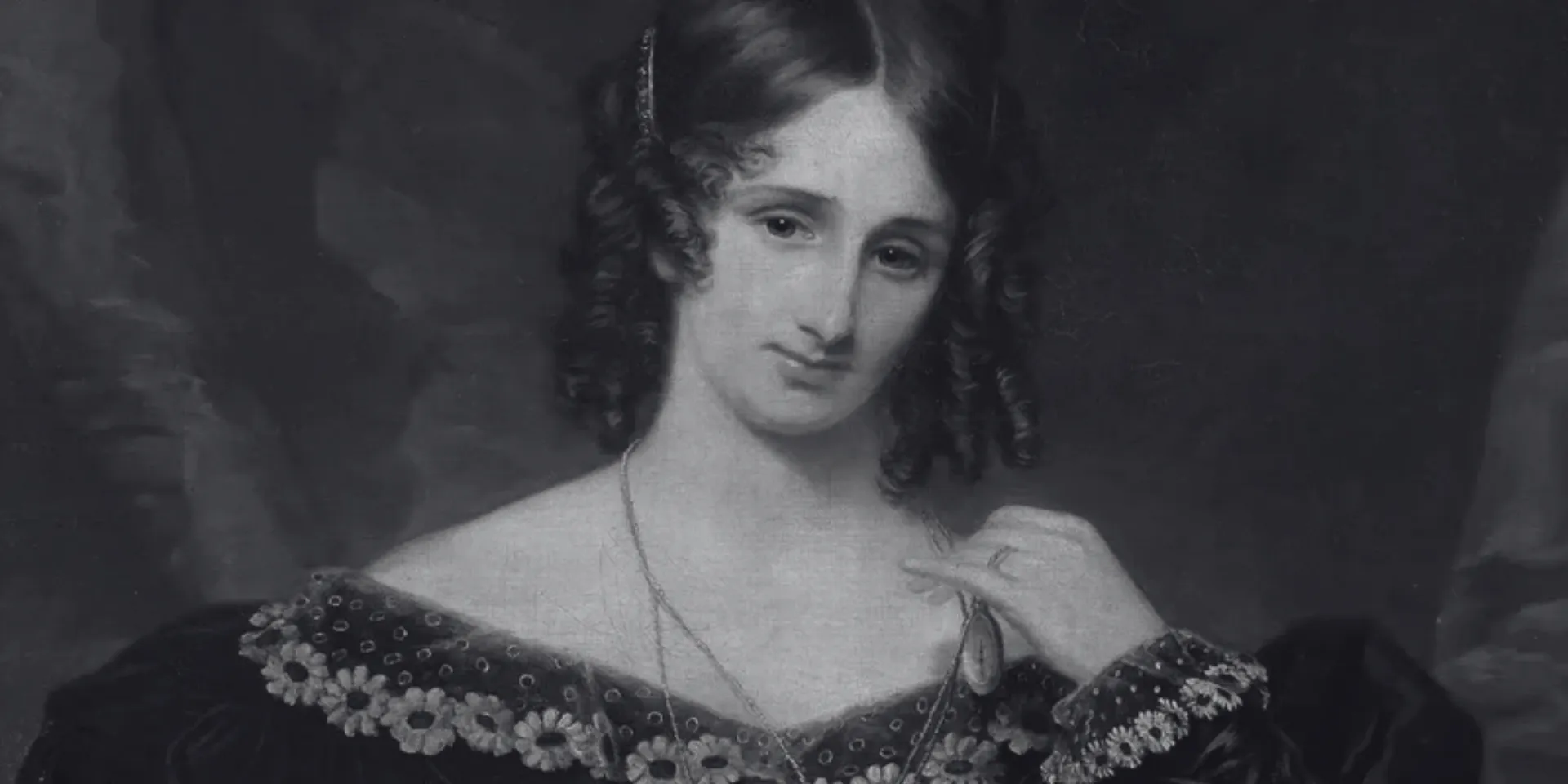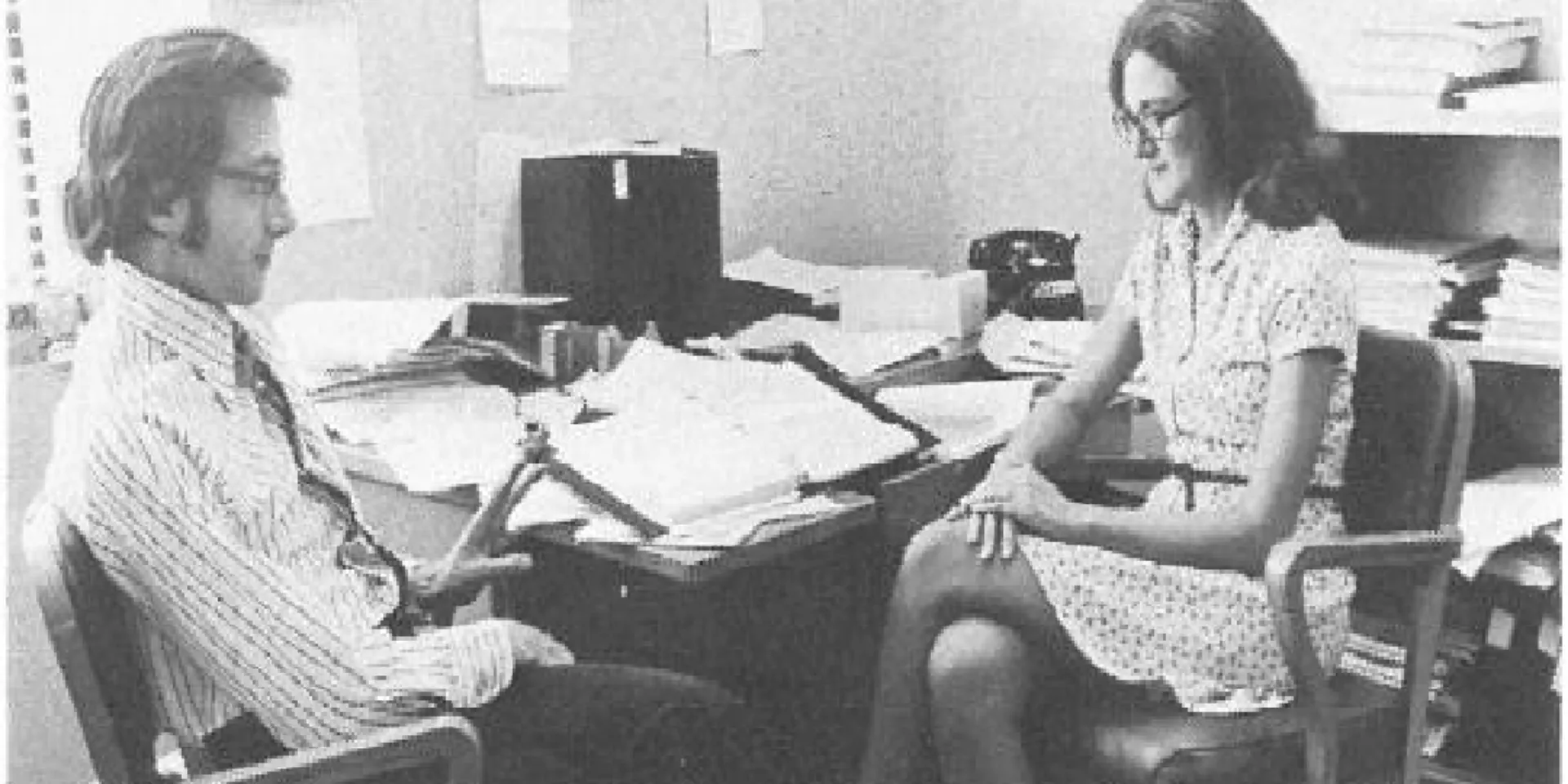Contents
ToggleEvery time you use Wi-Fi, GPS, or Bluetooth, you’re using technology that traces back to a 1940s Hollywood actress who spent her free time between takes designing weapons systems.
Hedy Lamarr created frequency-hopping technology that the military ignored for decades but eventually became the foundation for modern wireless communication.
A Viennese Childhood Among Engineers
Hedwig Eva Maria Kiesler was born in Vienna on November 9, 1914, into a family that mixed Jewish heritage with Catholic practice. Her father Emil worked as a bank director, but more importantly for Hedy’s future, he was fascinated by mechanical devices. During their daily walks through Vienna, Emil would stop at construction sites and factory windows to explain how machines worked.
This wasn’t casual parenting. Emil deliberately taught his daughter to think like an engineer. He showed her how gears transferred motion, how electrical circuits controlled power, and how complex systems could be broken down into simple mechanical principles. While other fathers taught their daughters social graces, Emil taught Hedy that every machine could be understood and improved.
Vienna in the 1920s was a center of scientific innovation. The city attracted engineers, physicists, and inventors from across Europe. Hedy grew up surrounded by technical discussions and scientific thinking. She learned that problems existed to be solved, not endured.
Her mother Trude was a pianist who had converted from Judaism to Catholicism. This religious complexity would later affect Hedy’s life in unexpected ways. But during her childhood, the family’s mixed background simply meant exposure to different intellectual traditions and ways of thinking about problems.
At age 12, Hedy won a beauty contest that suggested her future in entertainment. But she was equally interested in taking apart mechanical devices to understand how they worked. She would disassemble clocks, radios, and household appliances, then reassemble them with improvements. This combination of beauty and technical curiosity was unusual but would prove crucial to her later achievements.
Early Acting and a Controlling Marriage
Hedy’s entry into acting happened through typical teenage rebellion. She forged a note from her mother and talked her way into a job at Sascha-Film studio. Her first roles were small, but she quickly attracted attention for her striking appearance and natural screen presence.
In 1933, at age 18, she starred in “Ecstasy,” a Czech film that caused international scandal for its nudity and simulated orgasm scene. The film made her famous throughout Europe but also typecast her as a sexual symbol rather than a serious actress. This early experience taught her that beauty could be both an asset and a limitation.
The film also attracted the attention of Friedrich Mandl, an Austrian arms dealer who became obsessed with her. Mandl was reportedly the third-richest man in Austria and a major supplier of weapons to fascist governments. Despite her parents’ objections to his political connections, Hedy married him in 1933.
The marriage quickly became a prison. Mandl was pathologically jealous about the “Ecstasy” film and tried to buy up every copy to destroy them. He controlled every aspect of Hedy’s life, preventing her from acting and keeping her isolated in their castle. She later described feeling like “a doll” or “a thing, some object of art which had to be guarded and imprisoned.”
But Mandl’s control had an unintended consequence. As an arms dealer, he hosted business meetings at their home where weapons engineers discussed military technology. Hedy was expected to attend these gatherings as a decorative wife, but she was actually listening and learning. She absorbed discussions about radio-controlled weapons, torpedo guidance systems, and communications technology.
The engineers assumed she couldn’t understand their technical discussions. This assumption was their mistake and her opportunity. While they saw a beautiful actress, she was analyzing their problems and beginning to formulate solutions.
Escape to Hollywood
By 1937, Hedy could no longer tolerate Mandl’s control. She planned her escape carefully, disguising herself as a maid and fleeing to Paris. Some accounts suggest she persuaded Mandl to let her wear all her jewelry to a dinner party, then disappeared afterward. Either way, she successfully extracted herself from both the marriage and Nazi-dominated Austria.
In London, she met Louis B. Mayer, head of MGM Studios, who was scouting European talent. Mayer initially offered her $125 per week, which she rejected. But she booked passage on the same ship to New York and spent the Atlantic crossing convincing him to increase his offer to $500 per week. This negotiation showed the strategic thinking that would characterize her entire career.
Mayer changed her name from Hedwig Kiesler to Hedy Lamarr, partly to distance herself from the “Ecstasy” scandal. He promoted her as “the world’s most beautiful woman” and cast her in a series of films that emphasized her exotic appearance rather than her acting ability.
Her Hollywood debut in “Algiers” (1938) created a sensation. Audiences were mesmerized by her beauty, and the film’s success established her as a major star. But the role also trapped her in a pattern of exotic seductress parts that gave her few opportunities to demonstrate her intelligence or range.
Between takes on film sets, while other actors socialized or rested, Hedy worked on mechanical designs. She carried a drafting table in her trailer and spent hours sketching improvements to everyday devices. Her fellow actors thought this was an eccentric hobby. They didn’t realize she was developing the systematic approach to innovation that would later produce revolutionary technology.
Wartime Innovation and Scientific Collaboration
When World War II began, Hedy wanted to contribute to the Allied war effort. She approached the National Inventors Council but was told she could better serve by using her celebrity status to sell war bonds. This dismissal reflected common attitudes about women’s capabilities, even from supposedly progressive organizations.
Instead of accepting this limitation, Hedy began developing her own solutions to military problems. She remembered the discussions from Mandl’s business meetings about torpedo guidance systems. Radio-controlled torpedoes could be jammed by enemies who identified and blocked their control frequencies. This made the weapons unreliable and sometimes dangerous to the ships that launched them.
Hedy conceived a solution: rapidly switching the radio frequency so enemies couldn’t track and jam the signal. But she needed help implementing the technical details. She found an unlikely collaborator in George Antheil, a avant-garde composer known for experimental music that used multiple synchronized player pianos.
Antheil had solved the problem of keeping multiple mechanical devices synchronized in his composition “Ballet Mécanique.” Hedy realized the same principles could synchronize frequency changes in radio communications. Together, they developed a system that used paper rolls similar to player piano rolls to control frequency hopping in radio transmitters and receivers.
The collaboration worked because both Hedy and Antheil thought systematically about synchronization problems. Her engineering intuition combined with his experience in mechanical timing to create a practical solution that neither could have developed alone.
In 1941, they submitted their “Secret Communication System” to the National Inventors Council. The response was positive enough that the Council connected them with Samuel Stuart Mackeown, an electrical engineering professor at Caltech, to refine the technical implementation.
Patent Success and Military Rejection
On August 11, 1942, Hedy and Antheil received U.S. Patent 2,292,387 for their frequency-hopping system. The patent described a method for preventing radio jamming by rapidly switching transmission frequencies according to a predetermined pattern. Both the transmitter and receiver would follow the same switching sequence, staying synchronized while appearing random to enemies trying to intercept or jam the signal.
The technology was elegant and practical. It solved the jamming problem while adding security benefits, since enemies couldn’t decode messages without knowing the frequency-switching pattern. The system was also scalable – it could work with existing radio equipment by adding the frequency-switching controls.
But when Hedy and Antheil presented their invention to the Navy, military engineers dismissed it as impractical. They claimed the switching mechanism would be too large to fit in a torpedo and too complex to manufacture reliably. The Navy classified the patent and filed it away, suggesting instead that Hedy continue selling war bonds.
This rejection reflected multiple forms of bias. Military engineers couldn’t believe that useful technology could come from a Hollywood actress and a avant-garde composer. They were also conservative about adopting new systems during wartime, preferring proven technologies even when they were clearly inadequate.
The rejection was particularly frustrating because Hedy and Antheil had solved a real problem that was costing lives and reducing military effectiveness. Their frequency-hopping system would have made Allied communications more secure and weapons more reliable. But institutional prejudice prevented the military from recognizing the value of their innovation.
Hidden Technical Work During Peak Fame
While the military ignored her frequency-hopping patent, Hedy continued her Hollywood career and her private technical work. During the 1940s, she was one of the world’s most famous actresses, starring in films like “Boom Town,” “White Cargo,” and “Samson and Delilah.” But between takes, she was designing improved traffic lights, dissolvable tablets for carbonated drinks, and other mechanical innovations.
HerWiki is built and maintained by the support of amazing readers like you. If this story inspired you, join the cause and help us make HerWiki bigger and better.
Her systematic approach to invention was unusual for someone without formal engineering training. She identified problems by observing how people struggled with existing devices, then worked backward from the desired outcome to practical solutions. She built prototypes, tested them repeatedly, and refined designs based on actual performance rather than theoretical specifications.
This empirical method produced inventions that actually worked rather than clever ideas that looked good on paper. Her traffic light improvements addressed real safety issues she had observed at dangerous intersections. Her carbonated drink tablets solved practical problems with existing beverage preparation methods.
The contrast between her public image and private work was stark. Audiences saw a glamorous actress who played exotic seductresses. But her actual time was spent on mechanical design, prototype construction, and systematic problem-solving. She lived a double life as both a Hollywood star and a serious inventor.
Her fellow actors knew about her technical interests but didn’t take them seriously. They viewed her engineering work as an eccentric hobby rather than professional activity. This dismissal allowed her to continue her research without interference, but it also meant she received no recognition or support for her innovations.
Post-War Vindication and Continued Innovation
After World War II ended, military engineers began recognizing the value of frequency-hopping technology. The concept appeared in various military communication systems during the 1950s and 1960s, though developers claimed to have invented it independently rather than acknowledging Hedy’s original patent.
This pattern of ignored patents being “rediscovered” later was common for innovations by women and minorities. The original inventors received no credit or compensation while others profited from their ideas. Hedy’s frequency-hopping patent expired in 1959, just as the technology was becoming commercially viable.
During the 1950s and 1960s, Hedy continued inventing while her acting career declined. She developed new approaches to aircraft design, underwater navigation, and communication systems. But without institutional support or engineering credentials, she couldn’t attract attention for her technical work.
The emergence of computer technology in the 1960s created new applications for frequency-hopping principles. Early computer networks used similar concepts to manage multiple simultaneous transmissions. But the connection to Hedy’s original patent remained unrecognized by most engineers and historians.
Her technical work during this period focused increasingly on communication systems and signal processing. She anticipated problems that wouldn’t become obvious to most engineers until decades later. Her notebooks from the 1960s contain designs that wouldn’t be implemented commercially until the 1980s and 1990s.
The Digital Revolution Built on Her Foundation
The explosion of wireless technology in the 1980s and 1990s finally revealed the true significance of Hedy’s frequency-hopping innovation. Engineers developing cell phones, wireless networks, and satellite communication systems rediscovered the principles she had patented in 1942.
Frequency-hopping became a fundamental technique in Code Division Multiple Access (CDMA), which allowed multiple users to share the same radio frequency band without interference. This technology made modern cell phone networks possible by enabling thousands of simultaneous conversations in the same geographic area.
The same principles appeared in Wi-Fi networks, which use frequency-hopping to avoid interference from microwave ovens, cordless phones, and other devices operating in the same radio spectrum. Bluetooth technology uses rapid frequency switching to maintain reliable connections between devices while avoiding interference from other wireless signals.
GPS navigation systems use spread-spectrum techniques derived from Hedy’s original concept to maintain accurate positioning signals despite attempts at jamming or interference. Military applications of GPS rely heavily on frequency-hopping to ensure communication security in hostile environments.
Modern internet infrastructure depends on packet-switching networks that use concepts similar to frequency-hopping to route data efficiently through complex networks. While the implementation is different, the underlying principle of using predetermined patterns to manage complex communications remains the same.
Recognition Decades Too Late
In 1997, Hedy and George finally received recognition for their frequency-hopping patent when the Electronic Frontier Foundation awarded them its Pioneer Award. Hedy was 83 years old and living in seclusion in Florida, communicating with the outside world primarily by telephone.
The award citation acknowledged that their 1942 patent “provided the groundwork for the current development of CDMA, Bluetooth, and other telecommunications technologies.” But this recognition came 55 years after their original innovation and only after the technology had generated billions of dollars in commercial revenue.
The same year, Hedy became the first woman to receive the Invention Convention’s BULBIE Gnass Spirit of Achievement Award, sometimes called the “Oscars of inventing.” The award recognized her lifetime contributions to technological innovation rather than just the frequency-hopping patent.
In 1998, Austria awarded her the Viktor Kaplan Medal of the Austrian Association of Patent Holders and Inventors. This honor from her birth country represented a form of posthumous rehabilitation for someone who had fled as a refugee from Nazi persecution.
These late-career awards couldn’t compensate for decades of ignored innovations and missed opportunities. But they established Hedy’s place in the history of technology and demonstrated that her contributions had been substantial and lasting.
The pattern repeated throughout her career. Her mechanical designs were dismissed as hobbies rather than serious engineering work. Her systematic approach to problem-solving was ignored in favor of more dramatic but less effective solutions developed by men with formal credentials.
Even after her innovations proved successful, the credit was often given to men who “rediscovered” her ideas years later.
Her ability to combine beauty with intelligence challenged stereotypes that portrayed these qualities as mutually exclusive. She proved that women could excel in technical fields while maintaining their femininity, but this lesson was largely ignored by her contemporaries.
Her experience also revealed how institutional biases limited women’s opportunities to contribute to technological development. Even when women produced valuable innovations, they were excluded from the networks and resources needed to implement and commercialize their ideas.
The Lamarr Legacy
Today, every smartphone, laptop, and wireless device uses principles that trace back to Hedy’s 1942 frequency-hopping patent. The technology she invented to help Allied torpedoes avoid jamming has become the foundation for global communication networks that connect billions of people.
The irony is profound. A technology designed for military weapons became the basis for systems that promote international communication, cultural exchange, and economic cooperation. Hedy’s innovation intended to improve warfare ultimately contributed more to peace and prosperity than to military victory.
Modern internet infrastructure depends on packet-switching and frequency-hopping techniques that implement her original insights about avoiding interference through rapid, synchronized changes in communication patterns. The global economy now depends on reliable wireless communication that would be impossible without these principles.
The financial value of technologies based on her innovations is literally incalculable. Wireless communication, GPS navigation, and internet infrastructure generate trillions of dollars in economic activity annually. Yet Hedy received no compensation for providing the fundamental concepts that made these industries possible.
Her story demonstrates how individual innovations can have consequences far beyond their original intended applications. She solved a narrow military problem in 1942, but her solution became the foundation for the digital revolution that transformed human society 50 years later.
Hedy died alone in her Florida home on January 19, 2000, at age 85. She had spent her final decades in increasing isolation, communicating with the outside world mainly through lengthy telephone conversations. The contrast between her global impact and personal isolation was striking and sad.
Her death coincided with the peak of the technology boom that was built on principles she had invented. The internet, wireless communication, and digital networks that were transforming the global economy all traced back to concepts she had developed in her Hollywood trailer between takes.
Since her death, recognition of her technical contributions has continued to grow. Austria installed a quantum telescope named after her at the University of Vienna. Google has honored her with doodles on her birthday. An asteroid was named 32730 Lamarr in her honor.
In 2014, she was posthumously inducted into the National Inventors Hall of Fame for frequency-hopping spread spectrum technology. The citation acknowledged that her invention “provided the basis for modern spread-spectrum communication systems” used in cellular phones, wireless networks, and satellite communications.
But perhaps the most fitting tribute is the continuing expansion of wireless technology that builds on her fundamental insights. Every new application of frequency-hopping and spread-spectrum techniques validates her original vision of communication systems that could adapt intelligently to changing conditions.
Hedy Lamarr’s story reveals how women’s intellectual contributions have shaped the modern world in ways that remain largely unrecognized. She invented the technological foundation for the digital age while simultaneously maintaining a successful entertainment career.







